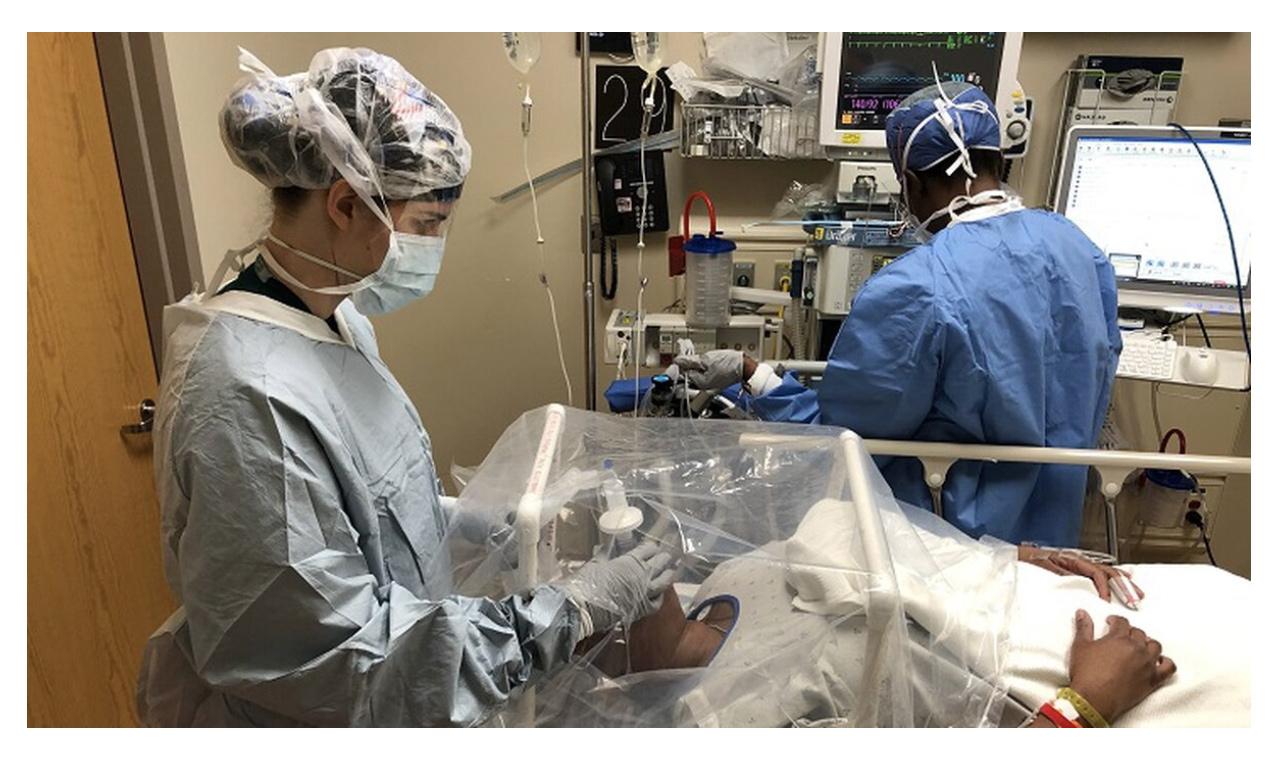That mirrors one striking change during the wars, with their “rapid cycle innovation.” If military doctors did surgery on a patient in Baghdad or Afghanistan, for example, they subsequently got information about how the patient was doing at each node of the evacuation chain, he said. With that feedback, Cordts said, “We rapidly learned how to adjust our practices when caring for patients with injuries as a result of combat.”
In the civilian world, there’s most likely to be a randomized, controlled trial, a rigorous, multi-year process before innovations are approved.
“In certain clinical situations, that’s not feasible,” such as in the case of combat injuries, said Air Force doctor Col. Todd Rasmussen, professor of surgery and associate dean of research at the Uniformed Services University of the Health Sciences. The alternative is the rapid cycle innovation, a real time assessment, based on real world data.
“We all want randomized control trials, but in certain situations, we don’t have the time to plan and conduct a five-year [trial] because the issue is just too urgent,” Rasmussen said.
Just as the military shifted its research priorities in the early 2000s to some specific combat care issues such as hemorrhage control, resuscitation and limb salvage, they’ve shifted priorities to a variety of research efforts during COVID-19, including their vaccine research which began early on in the pandemic. Researchers in the military realm are also conducting a variety of other COVID-19 studies, such as why some people with the virus have no symptoms while others get very sick.
Researchers are also finding ways other ways to improve patient care. They’ve invented a device that provides an extra layer of personal protective equipment for medical providers as they’re performing procedures. It uses PVC piping for tent frame that can be placed over the patient’s head and chest, lined with a polyethylene bag to seal in any possible COVID-19 particles that could endanger medical providers as they perform procedures. The COVID-19 Airway Management Isolation Chamber, or CAMIC, has a negative-pressure vacuum that contains and reduces aerosols and airborne particles.
The CAMIC is being used by the military around the world and on the battlefield, said Army doctor Maj. Steven Hong, assistant professor of surgery at USUHS, and chief of Head and Neck Surgical Oncology and Reconstructive Surgery at Walter Reed National Military Medical Center. He came up with the idea of the three-dimensional airway tent after watching the COVID-19 crisis unfold in New York City in mid-March, he said, noting the shortage of protective equipment, and realizing the vulnerability of health care workers to the contagious virus, especially those within his specialty of head and neck surgery.
He pulled together a team who designed, built and tested the CAMIC, and received approval from the FDA for emergency use, within six weeks.
Watch on YouTube: https://youtu.be/H2lZWnZlubk





